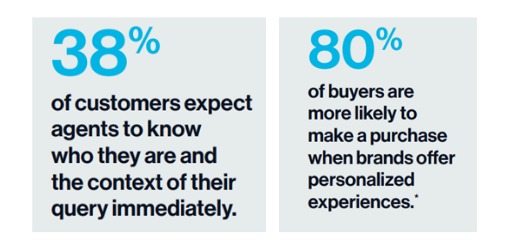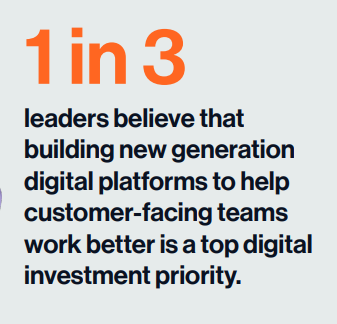Since the onset of a global pandemic, the world has seen a remarkable shift in the dynamic between business and consumer behavior.
Where once, retailers would have almost anonymous transactional relationships with their customers, now both retailers and consumers are demanding deeper, more meaningful interactions.
The winners in this new paradigm are those who use the ongoing flow of new technology amidst an era of digital transformation, to build personal customer experiences.
In this blog we’ll examine the significant and rapid transformation in consumer habits and demands since the beginning of the COVID crisis.
We’ll also look at how businesses have responded, and how the retail economy has changed forever.
And finally, we’ll share some 2022 trends highlighting how today’s retail economy is piloted by real time insights and analytics.
The flourishing homebody economy
Thanks to COVID, a stream of new phrases is constantly trickling into our vernacular. The term ‘homebody economy’ has come about due to the increased shopping, studying, working and entertainment we’ve been doing at home during various periods of lockdown.
The phrase was coined in 2018, pre-pandemic, to describe the growing market among millennials, who couldn't afford to do much but stay at home.
No longer considered a disparaging comment, homebody reflects a widespread and increasing trend in the developing ability of technology to get us what we want, wherever we are, almost instantly.
Examples:
- With home working dependent on quality technology, companies supplying tech infrastructure and support have thrived.
- The rise in pet ownership due to new remote and hybrid working environments has been a boon to online pet suppliers.
- The increase in gaming has flourished with non-existent commutes and more people spending wages on entertainment.
- Refurbishment is another area where furniture chains and building suppliers have seen demands rise.
- Even the stock market has seen an increase in online trading, with people having more time and opportunity to dabble and invest after not being able to travel.
The shift to digital
Remote working, learning, and shopping have surged thanks to the plethora of ways we can buy goods and services digitally. According to McKinsey, digital adoption across all economic sectors has increased dramatically.
Over the course of just 15 days, virtual appointments multiplied by ten, and in five months, and Disney+ built a subscription base that had taken Netflix seven years to achieve.
Reliance on digital was already growing before the pandemic began, and the rise in online penetration is expected to continue after the pandemic is over.
The withdrawal of loyalty
McKinsey studies have also revealed that since the crisis began, 75% of US consumers have changed something about the way they shop. Approximately a third of these have tried a new shopping method such as delivery or curbside pickup, and almost a third have tried a different retailer.
Consumers are looking for value, including lower prices, promotions, larger package sizes or less expensive shipping. This means retailers and suppliers and having to work harder to retain existing customers – and are faced with the daunting task of winning new ones.
The decline of cash
During the height of the pandemic, the desire to reduce physical contact accelerated the use of contactless payment methods. The decline of cash payment methods in favor of digital methods has been growing in many countries for years.
Technology enabling payments using smartphones, and QR codes will contribute to this shift.
Curbside pickup, click and collect, and home delivery are ways in which businesses are offering minimum-contact options to consumers.
Read more about COVID-19 and the evolving payments space here.
The ‘omni’ experience
Consumer behavior is being increasingly influenced by what marketing gurus call the ‘omnichannel shopping experience’.
Omnichannel is an all-encompassing way of creating seamless interaction with customers/consumers.
The premise of reduced customer effort is central to the omnichannel imperative. No matter what channel a customer uses to interact with a brand, that information should be centrally stored and made immediately available via any other channel, so that customers don’t have to repeat themselves.
Businesses whose payment channels don’t provide a seamless experience and convenience throughout the customer journey will almost certainly lose the customer – and potential sales.
Omnichannel isn't just about information availability, it also means having a consistent brand image regardless of the method of interaction.
It may seem simplistic, but the first step for businesses towards delivering an omnichannel experience is to think like a customer. How would you want to be treated? What are the things that would irritate you, cause you to become dissatisfied, or even make you consider moving to a different brand?
Real time insights – the future of CX
Sustaining and improving a great Customer Experience (CX) depends entirely on analytics and insights.
For decades, traditional surveys given to customers after a transaction have provided customer experience experts with useful data. But there can be a huge difference between the type of insights gained from those methods versus the insights obtained in real time – and that’s if a customer even completes the survey in the first place.
Payment analytics – giving businesses the competitive edge
With more sophisticated data collection tools, as well as the ability to store and interpret large data sets, real-time CX metrics show us in quantifiable ways exactly what happened.
This means that instead of having to ask a customer about their e-commerce experience, we can actually look at the data, and see for example that a transaction took longer than it should have, or that they had problems with their billing information and perhaps even contacted chat support to ask a question.
With real-time data collection using beacon technology, sentiment analysis, web analytics and more, we can measure the customer experience and identify specific pain points that an individual may not feel free to articulate in a survey. We can also connect these measurements to look at the entire customer journey as a whole.
Trends shaping the future of CX
For businesses, the shapeshifting economy reinforces the need for a seamless omnichannel strategy that speaks to the digital-first consumer, while ensuring human engagement. All this, while navigating a possibly permanent hybrid work environment. Not a big ask, right? Well, not if you have real time analytics to help implement these strategies.
We’ll take a brief look at some of the 2022 key trends around consumer and business behavior, according to a recent report by Freshworks.
Trend 1. Instant is the new
Waiting An analysis of over 4,500 businesses and107 million customer interactions showed that speed of service had the highest impact on Customer Satisfaction (CSAT) scores. Today’s consumers want to receive support through any channel that serves their purpose the fastest, including self-service options.
Trend 2. Personalization is key
Consumers now expect brands to use data from prior interactions, demographic profile, etc. to deliver a hyper-personalized experience. They expect an omnichannel experience based on a knowledge of them and their preferences.
For example, they might start their customer journey with an ad on Instagram, move to the website, chat with an agent, and visit a physical store before finally making a purchase - then take to social media to share their experiences. Consumers are unforgiving of businesses who don’t get it right.
 Image source: Freshworks
Image source: Freshworks
Trend 3. Messaging and mobile is the new face-to-face
Consumers want to be able to continue conversations at their own pace, on an app they already use. Apple Business Chat, Facebook Messenger, WhatsApp, and Line Chat are some go-to channels of engagement.
By adopting messaging and mobile-first, businesses are able to keep an always-on open line of communication with every customer – as well as slashing costs associated with customer engagement – something that can never be feasible over traditional phone lines.
Trend 4. Customer service agent empowerment
The pandemic-induced upsurge in query volumes and customer anxiety has been a burden to many customer service agents, and the threat of burn-out is very real. Businesses have started to recognize this and reprioritize the well-being of their teams.
Leaders have started to rely on technology more than ever to empower employees to handle workloads more efficiently and become customer satisfaction mavericks.
 Image source: Freshworks
Image source: Freshworks
Trend 5. AI in CX can increase CSAT
In case you haven’t had enough acronym stew, artificial intelligence has become an essential part of the customer experience strategy and will continue to impact customer satisfaction as the technology evolves.
Smart bots, through learning and becoming smarter, can help transform customer agent experiences from reactive to predictive by predicting customer behavior, and becoming more like a human agent’s assistant.
AI can help keep up with customer demands more efficiently, relieving the burden of tackling basic and repetitive queries, like ‘what is your refund policy?’ leaving human agents to engage with customers and build more proactive relationships.
Real time analytics – the key to customer satisfaction
By gaining unlimited access and insights into customer usage data, and end-to-end transaction performance metrics, businesses can make proactive management decisions, shape the customer experience, and help businesses to achieve a winning edge when it comes to customer satisfaction.
IR Transact can help by bringing real-time visibility and access to your entire payments environment, businesses can turn data into intelligence, and keep their payments systems flowing.



